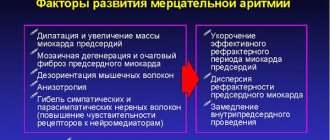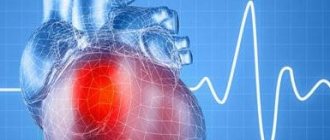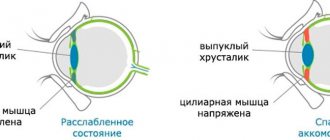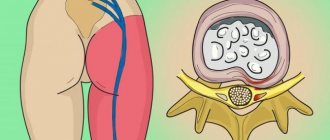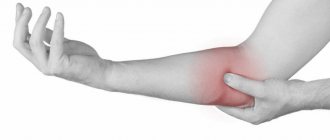An occasional headache is familiar to all people, since it can appear as a consequence of ordinary fatigue or the body’s reaction to changes in meteorological conditions. Usually this condition does not require medical intervention and stops on its own, you just need to rest a little or wait for the weather to change. However, constant pain in the temples, forehead or eyes is a clear reason to think about the state of your own health, since regular pain in the head (chronic cephalgia) can be one of the symptoms of a serious illness.
Causes of headaches
Insufficient time for rest, nervous stress, city noise, and an overly intense rhythm of life are often the root causes of constant headaches. If the cause of stress or discomfort is eliminated for a certain period of time, your health will improve significantly. While persistent cephalgia may be a sign of a serious disease that requires medical intervention:
- allergy;
- high intracranial pressure caused by vascular diseases;
- migraine accompanied by nausea, sound and light sensitivity;
- hematomas in the head caused by injury;
- tumor formations;
- aneurysms;
- the presence of inflammatory foci in brain tissue;
- nasal congestion, infectious diseases of the respiratory system;
- critical days of the menstrual cycle or pregnancy;
- damage to the trigeminal nerve.
Chronic headaches in the temporal region and forehead with osteochondrosis of the cervical spine, as a rule, are chronic. This is a consequence of pinched vessels supplying the neck and irritation of the nerve endings. After the underlying disease is cured, the patient’s well-being improves. If no other reasons related to physiology can be traced, the whole issue may be a disorder of the vegetative-vascular system.
Non-hazardous conditions
Cephalgia often manifests itself during pregnancy, often at the beginning, as a result of hormonal imbalance, a drop in immune defense occurs, and the emotional reaction becomes difficult to control. Women are often under mental stress, feel pressure drops, forgotten chronic diseases appear, and catch a cold.
These reasons influence the appearance of pain in the temples and forehead, which has an aching, squeezing nature. The following factors can worsen the situation:
- fatigue, poor sleep;
- change in climate zone;
- unhealthy diet (consumption of sweets, citrus fruits, strong drinks, overeating, hunger);
- physical stimuli (bright lights, smells, sharp sounds).
The cause of painful sensations can be various everyday moments associated with prolonged exposure to the open air in the heat or, conversely, in the cold, in a strong wind.
If you wear contact lenses, they can lead to headaches or dry eyes. Also, a person’s well-being is influenced by what he eats. By eliminating harmful components from the diet (smoked meats, processed foods, fast food, alcohol, caffeine), the feeling of discomfort may go away on its own.
Dangerous reasons
When you first seek medical help with a complaint of headaches, your blood pressure is usually checked, since this is the most likely cause for cephalalgia. The cause of high blood pressure (BP) can be an inactive lifestyle and changes in atmospheric conditions, lack of sleep, long-term drug therapy, troubles, and unhealthy habits.
Headache can be caused by a common cold, as well as various infectious diseases. Meningitis is considered among the most dangerous. This disease leads to inflammation of the meninges and can only be treated in a hospital.
Severe anomalies include benign or malignant neoplasms in the skull. At certain stages, the tumor causes severe pain in the head. At the first suspicion of this disease, it is necessary to conduct a neurological diagnosis and contact an oncologist.
How to get rid of pain in the head and temples
If a severe headache in the temples occurs at home, you can try to get rid of it without resorting to drug treatment. The choice of a method to reduce temporal pain should be approached carefully. You can do a head massage yourself. Find a comfortable position and start massaging your head with your fingertips. If a headache occurs in the right temple, start making massage movements on the right side of the head, if in the left - on the left. Then run your fingers all over your head, including the temporal, occipital, and frontal areas. When you finish the massage, remain in a relaxed state for a few minutes.
Temporal headaches may go away after taking a warm shower. The patient's blood circulation to the brain improves, which allows him to get rid of headaches. The bath relaxes, which will also help relieve pain. Walking in the fresh air for half an hour can reduce headaches in the temples, which are caused by migraines. If, after attempts, the headache in the temples does not go away, contact the Yusupov Hospital.
Research methods
Headache is a symptom, not a pathology. This symptom is not specific, and for this reason, its presence is difficult to make a correct diagnosis. It is necessary to take into account the accompanying manifestations and perform diagnostics using appropriate equipment to identify the underlying cause of this condition. The following procedures are prescribed for diagnosis:
- Blood pressure measurement.
- MRI of the brain.
- Ultrasound of the vessels of the neck and head.
- Laboratory blood analysis.
- Cardiogram.
- CT scan of the skull and brain.
- Dopplerography.
Treatment
Conservative therapy
The plan of conservative measures is determined by the etiology of the pain syndrome:
- Migraine
. To relieve attacks, simple and combined analgesics are used, and sometimes therapeutic blockades are performed. To prevent new paroxysms, antidepressants, anticonvulsants, and psychotropic drugs are used. - Tension headaches
. Medicinal methods include NSAIDs, antidepressants, muscle relaxants, occipital nerve blocks, non-medicinal methods - massage, manual therapy, acupuncture, biofeedback, relaxation techniques. - Bundle cephalalgia
. Paroxysms are eliminated with the help of triptans; in case of intolerance, oxygen inhalations are prescribed, and local anesthetics are injected into the nasal cavity. Calcium channel blockers are effective for preventive purposes. - Hydrocephalus
. In the case of an acquired variant of the pathology, the causative disease is treated and diuretics are prescribed. - Arterial hypertension
. Etiopathogenetic therapy is carried out. It is recommended to control blood pressure and take antihypertensive drugs. - Temporal arteritis
. The basis of drug therapy is glucocorticoid hormones. If there is no result, they switch to cytostatics. To eliminate symptoms, vasodilators, anticoagulants, and anti-inflammatory drugs are prescribed. - Trigeminal neuralgia
. Anticonvulsants are considered the first line treatment. Additionally, antispasmodics, microcirculation correctors, antihistamines, and therapeutic blockades are used. - TMJ dysfunction
. It may be necessary to eliminate dental pathologies. Soft food is recommended. Pain is reduced with the help of NSAIDs, antidepressants, botulinum therapy, glucocorticosteroid blockades, massage, and physiotherapy.
Symptoms of ocular migraine
Based on its clinical manifestations, atrial scotoma is difficult to confuse with other ophthalmological diseases. In the retinal form, provoked by abnormal relaxation of the posterior cerebral artery, the patient is concerned about:
- defects appearing in the field of view - bright flashes, flickering, dark spots and streaks that can merge with each other;
- gradual total decrease in visual acuity;
- the appearance of phosphenes (visual images) in the “blind” zones of the visual field and along its periphery.
As ocular migraine worsens, it becomes complicated by headache localized in the frontal lobe, bridge of the nose, spreading to the orbits. It pulsates, waxes and wanes, like contractions during childbirth, inevitably reaching a peak. At the peak of the attack, pain is complicated by nausea, vomiting, and a feeling of fullness in the head.
Good to know: a characteristic symptom of ocular migraine is increased sensitivity to light, sounds, and touches. They increase the pain, so the patient strives with all his might for solitude and silence.
The average duration of an attack of atrial scotoma is from 30 to 300 minutes. A mild degree of anomaly occurs within 10-20 minutes, sometimes not accompanied by headaches. After the end of the attack, it takes up to 1 hour for complete restoration of vision.
If atrial scotoma is caused by compression of the 3rd pair of cranial nerves, the patient experiences:
- transient drooping of the upper eyelid;
- dilation of the pupil in one eye while maintaining the same size in the other;
- dilation of the pupil against the background of paralysis of the muscles that regulate its diameter;
- divergent strabismus due to paralysis of the extraocular muscles in one eye.
Among the visual impairments with ocular migraine of this form, a split image is observed, when one eye perceives the picture correctly, and the other transmits an image inverted horizontally or vertically. This picture is typical for children and adolescents who have entered puberty.
Good to know: ocular migraine with compression of the cranial nerves has a specific “Alice syndrome”, which consists of the appearance of visual hallucinations visible in peripheral vision.
Symptoms with ophthalmoplegic atrial scotoma last longer than with retinal scotoma - up to 2 weeks. All this time, the anomalies may be accompanied by headaches, but often occur without them.
Forecast and prevention of ocular migraine
Patients diagnosed with atrial scotoma must carefully observe the daily routine, work and rest. Harmonious distribution of the load on the physical body and psyche helps reduce the risk of an attack by 2-3 times. Nutrition also plays a role - some foods provoke constriction or dilation of blood vessels. These include:
- red tomatoes and products made from them;
- milk;
- red grape wines;
- celery;
- cocoa and chocolate.
All these products contain tyramine, a complex organic polypeptide that affects vascular tone and excitation processes in brain cells.
It is advisable to avoid stressful situations and increased physical activity. To relax the nervous system, swimming, massage, acupuncture, hydrotherapy, and rational psychotherapy are recommended. If preventive measures are taken, ocular migraine does not pose a threat to health and life, although it can periodically reduce their quality.
Causes of ocular migraine
The main cause of atrial scotoma is a series of neurological disorders, the roots of which lie in a local decrease in the tone of the posterior cerebral artery. Against this background, ischemia (insufficient blood supply) develops in areas of the cerebral cortex involved in the analysis of visual signals, as well as in the retina itself. Alternatively, ocular migraine occurs due to compression of the 3rd pair of cranial nerves by the dilated cavernous sinuses or carotid arteries.
An attack of atrial scotoma can be triggered by:
- violation or prolonged non-compliance with the work and rest regime;
- sleep disorders;
- change of place of residence, especially with a change in time zones;
- suffered stress, emotional tension;
- hormonal imbalances, including cyclical changes in women;
- long-term stay in rooms with high gas pollution;
- exposure to flickering light sources, including older PC monitors.
The risk of experiencing an ocular migraine attack is higher in patients with abnormalities in the structure of blood vessels: aneurysms, malformations. In adolescents, an attack can be triggered by academic stress and a growth spurt.
What is atrial scotoma?
By ocular migraine, experts mean a type of headache with a complex of neurological manifestations, including visual abnormalities. The pathology was first described in the 19th century, but the mechanism of its occurrence was presented in more detail by modern physiologists. It is believed that the tendency to ocular migraine is inherited genetically through the female line. Men suffer from it in isolated cases.
Atrial scotoma has no direct relation to ophthalmology; however, during an attack, serious disturbances in visual perception may occur. According to statistics, pathology is a companion to the physiological and physical maturation of the body, that is, at a young age. Due to the instability of the autonomic nervous system, attacks can recur several times a month. In older age, migraine bothers people who have to experience visual stress for a long time.
Linear progression is not typical for atrial scotoma. The attacks arise and subside spontaneously. Complications do not occur even after prolonged exacerbations, although at the peak of pain, complete loss of vision is possible. After relief of the main neurological symptoms, the ability to see is restored independently.
